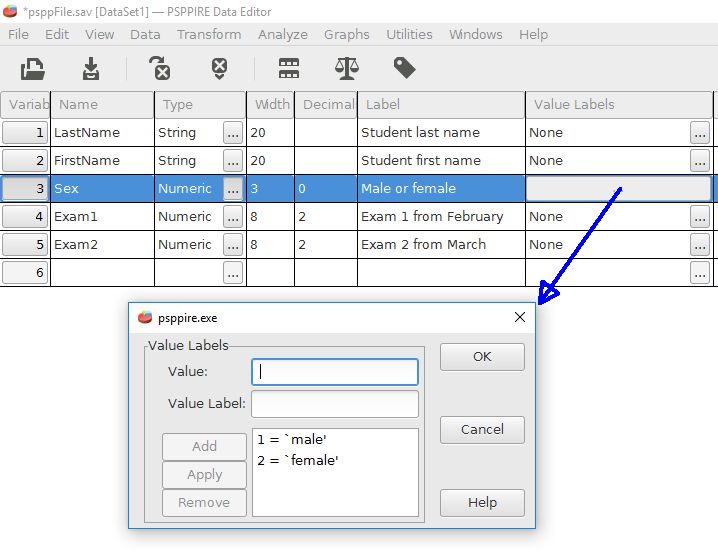
This work is licensed under a Creative Commons Attribution 4.0 International License that allows sharing, adapting, and remixing.
Note that the type of the sex variable is set to be numeric, not words like "male" or "female". This may seem odd, but it shows a common practice in statistics. Categories like male/female or married/single/divorced are often represented by numbers rather than words. For example, males could be coded as 1 and females could be coded as 2.
This method of representing categories is sometimes called "dummy coding", with the word dummy possible being used because the values do not represent a numerical measurement. These are coding an independent variable, such as group membership. Using numbers for categories will also save some valuable data entry time. We can enter a 1 or 2 instead of typing in "male" or "female" for each person.
The value labels field can be useful for configuring these dummy variables.

Clicking the three dot button in the value label field for a variable will give additional options. The coding scheme can be entered as the value and the value label. Click "add" to enter the scheme.
Taking the time to document our value labels will be useful for our outputs. The labels like "male" or "female" will be included in our outputs rather than the less informative codes "1" and "2". This documentation will be valuable for keeping track of what the codes mean if we refer back to this analysis at a later point in time. A year from now you might not remember what the codes 1 and 2 were intended to represent.

This work is licensed under a Creative Commons Attribution 4.0 International License that allows sharing, adapting, and remixing.